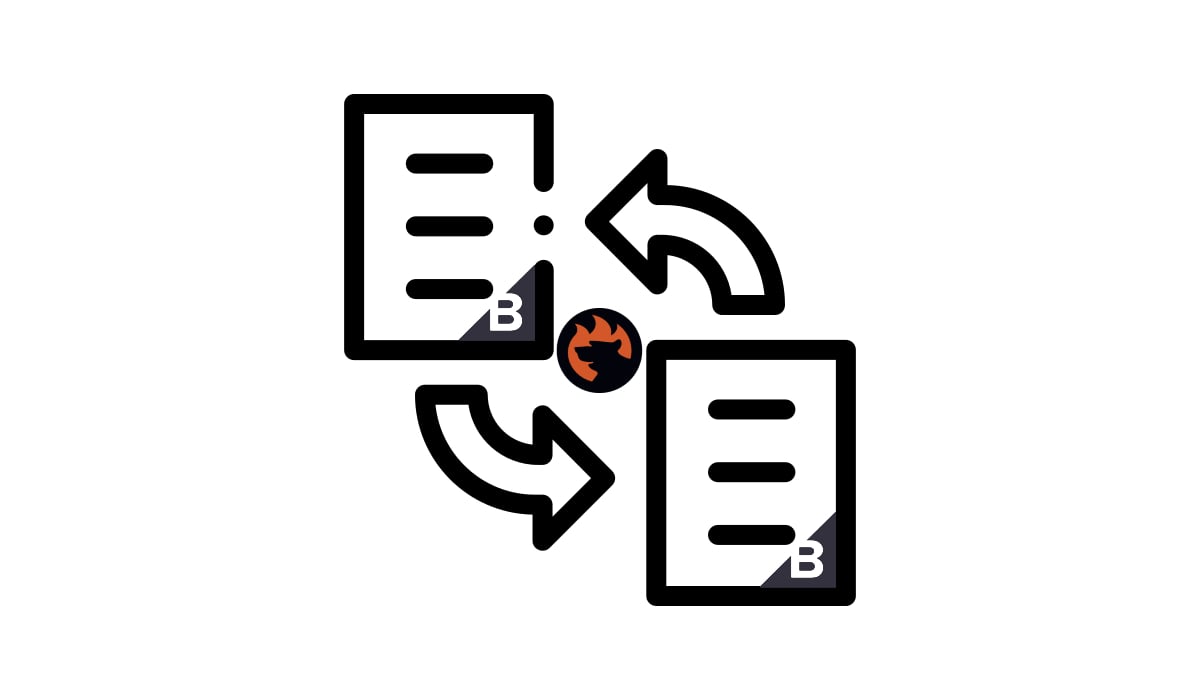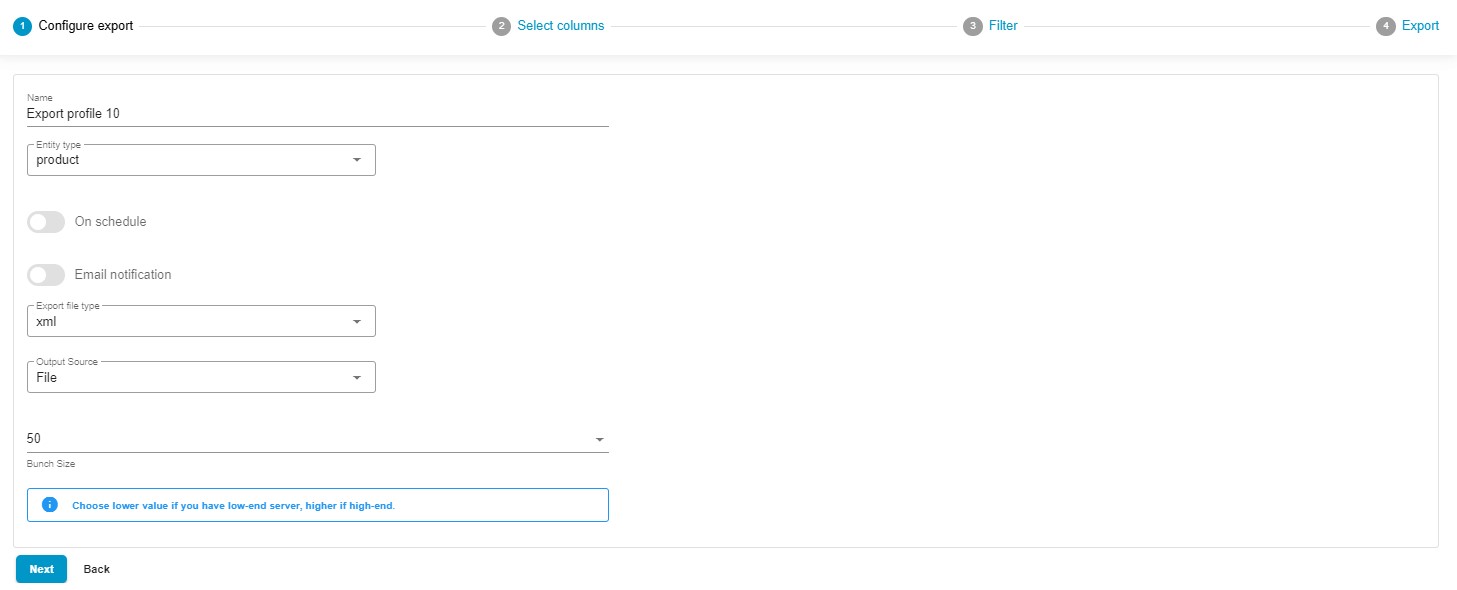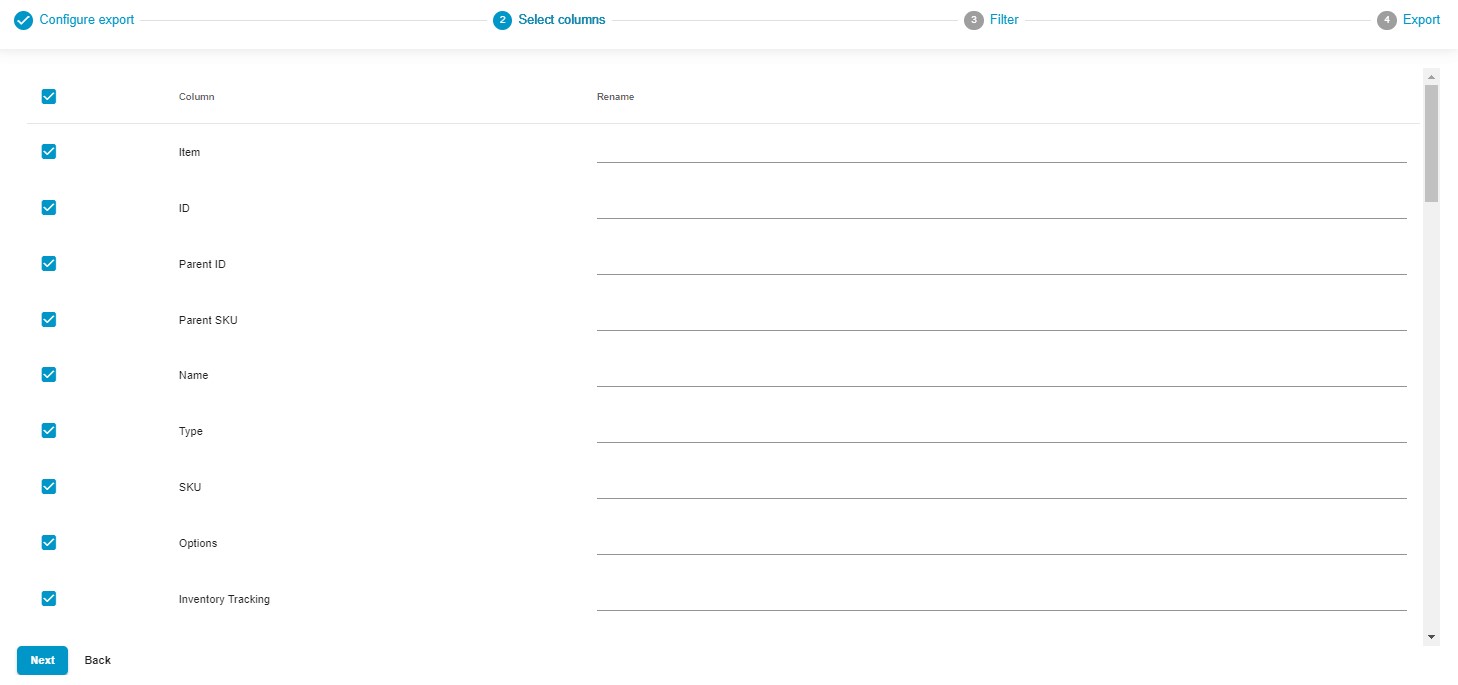How to Export XML Files From BigCommerce

When it comes to export file formats, your options are limited due to BigCommerce’s requirement for using CSV files. But what if your partner requires updates in XML? The only conventional method involves converting these files from CSV into XML after export, which can be quite frustrating. However, there’s a more efficient way to update your partner’s system without the need for this conversion, and it’s made possible through the . This application offers comprehensive support for XML files in both import and export operations. In this article, we’ll walk you through the process of exporting XML files to BigCommerce. But before we delve into that, let’s take a moment to understand the differences between CSV and XML. And don’t forget to explore our BigCommerce Cookbook for additional valuable recommendations.
Table of contents
CSV vs. XML
A CSV (Comma-Separated Values) file, in essence, is a text file that employs commas as separators between different blocks of data.
On the contrary, an XML (Extensible Markup Language) file takes a somewhat more intricate approach to the storage and transmission of data. It’s a file format that incorporates tags and text to meticulously structure and organize data. These tags strictly follow specific syntax guidelines and envelop the text in the file that you aim to store.
The primary distinction between CSV and XML file formats lies in their fundamental nature. CSV is a straightforward text format, where values are delineated by commas, hence the acronym Comma Separated Values. In contrast, XML relies on tags to denote relationships between entities and to store data related to complex objects.
CSV offers the advantage of being highly user-friendly and demands fewer technical skills for handling. Additionally, CSV files are notably smaller than XML counterparts, requiring fewer computational resources.
Conversely, XML shines as a more adaptable and extensible format, rendering it ideal for the storage and exchange of intricate, structured data. Its flexibility makes it a preferred choice when dealing with complex information.
How to export XML files using the default BigCommerce tools
To export XML files using the default BigCommerce tools, you’ll need to follow a two-step process. By default, BigCommerce’s export functionality generates only CSV files. Here’s how you can work around this limitation:
Step 1: Export Data as CSV
- Log in to your BigCommerce admin panel.
- Navigate to the “Advanced Settings” menu and select “Data Export.”
- In the “Data Export” section, you can choose the entity you want to export (e.g., Products, Customers, Orders).
- Configure the export options such as date range, file format, and other relevant settings.
- Click the “Export” button. BigCommerce will generate and prepare a CSV file containing your selected data.
Step 2: Convert CSV to XML
Since BigCommerce doesn’t offer native XML export, you’ll need to convert the CSV file to XML using a third-party tool or script. Here’s a general outline of how you can achieve this:
- Obtain a CSV to XML converter tool or script. There are various online converters and software available that can perform this conversion. You can search for a suitable tool or script that matches your needs.
- Use the converter to transform the CSV data into XML format. Most converters will provide options for mapping CSV columns to XML elements and attributes.
- Save the resulting XML file to your local storage or a designated server location.
- Your data is now in XML format and ready for further use or sharing.
Remember that the exact steps and tools you use may vary depending on your specific requirements and the complexity of your data. The key is to find a reliable CSV to XML converter that suits your needs and allows you to structure the data in the desired XML format. However, you can easily avoid this time-consuming conversion by using the Improved Import & Export Tool.
How to export XML from BigCommerce without conversion
To set up BigCommerce XML export with the help of the Improved Import & Export Tool, follow these steps:
I. Create a new export profile by clicking the “New Profile” button under “Apps -> My Apps -> Firebear Import & Export Tool -> export.”
 II. You are on the “Select File” screen. Here, you need to complete the following steps:
II. You are on the “Select File” screen. Here, you need to complete the following steps:

- Specify a title for your export profile.
- Choose the entity you want to export: products, orders, or customers.
- If necessary, create a schedule for your updates, automating XML exports from BigCommerce.
- Configure email notifications to add alerts on successful, failed, or both kinds.
- Choose XML as your file format. You can also export XLSX and CSV files or Google Sheets spreadsheets.
- Select your export source: FTP, Google Drive, or Google Sheets.
- Choose a bunch size, specifying a lower value for low-end servers.
III. Click “Continue” to proceed to the “Select columns” screen. You can customize the column titles following your partner’s requirements. Place a new value (“Rename”) in front of the default column title (“Column”) you want to modify. Also, uncheck columns that you don’t want to export.

IV. The third screen lets you create filters to narrow down the selection of records in your output.
V. Click the “Save & Close” button to save your BigCommerce XML export profile for future use. Click the “Export” button at the bottom of the screen to launch the update immediately.

These steps will help you set up BigCommerce XML export. For more detailed information, see our Improved Import & Export Tool Manual.
Other Features
BigCommerce store owners have a formidable ally in the Firebear Import & Export Tool. This versatile instrument not only automates the import and export processes but also introduces a myriad of features absent in the default BigCommerce setup. It serves as a catalyst for data management, reshaping the landscape in several impactful ways, including:
- Full Product Import and Export: Effortlessly oversee product data and custom properties, ensuring your catalog remains perpetually up-to-date.
- Customer Data Handling: Seamlessly import and export customer details, streamlining customer relationship management tasks for a hassle-free experience.
- Order Export: Efficiently export order data, empowering you with valuable insights into transactions and sales analytics.
- Precise Data Mapping: Craft meticulous data relationships, ensuring seamless integration between your BigCommerce store and external systems.
- Flexible Scheduling: Tailor import and export schedules to your liking, automating data updates.
- File Format Compatibility: Seamlessly operate with various file formats, including CSV, XML, and XLSX, facilitating smooth data transitions.
- Google Sheets Integration: Seamlessly transfer data between BigCommerce and Google Sheets for collaborative data management.
- Direct File Uploads: Simplify data import and export with direct file uploads, streamlining the entire data management process.
- Secure FTP/FTPS Uploads: Bolster data security during transfers with comprehensive support for FTP/SFTP protocols.
- Google Drive Integration: Optimize data file uploads with integrated Google Drive compatibility, enhancing accessibility and convenience.
As you can see, the Firebear Import & Export Tool empowers BigCommerce store owners to handle their e-commerce operations with unparalleled efficiency. From product catalog maintenance to customer data management and order processing, this application simplifies complex tasks, ultimately boosting the overall efficacy of your online store. For more in-depth information about this remarkable product, please visit:
